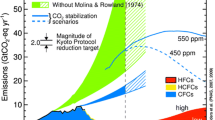Abstract
Has the EU's ozone policy been effective? In other words: What caused the 90 per cent phase-out of ozone depleting substances (ODS) within the EU? Was it due to an EU-wide regulatory approach, to national circumstances, or to the Montreal Protocol? As EU's environmental policy has not been overly successful so far, it would interesting to know why ozone policy is an area where the EU and its Member States have reached targets effectively over a relatively short time. We suggest that the effectiveness of EU's ozone policy is due to two factors that together secured this rapid phase-out. First, the ozone policy was enacted by means of an EU regulation – rather than by directives – which required all Member States and all larger ODS-generating corporations to implement a ban simultaneously. Second, with the US administration making a u-turn and the increased availability of ODS-substitute chemicals, Europe saw a political opportunity to speed up the phase-out process. A limited study of the phase-out of ODS in Spain supports this argument. While the EU's ozone policy has been effective, its success owes much to particular economic and political circumstances associated with the issue of ozone depletion.
Similar content being viewed by others
Author information
Authors and Affiliations
Rights and permissions
About this article
Cite this article
Næss, T. The Effectiveness of the EU's Ozone Policy. International Environmental Agreements: Politics, Law and Economics 4, 47–63 (2004). https://doi.org/10.1023/B:INEA.0000019051.06627.2e
Issue Date:
DOI: https://doi.org/10.1023/B:INEA.0000019051.06627.2e



